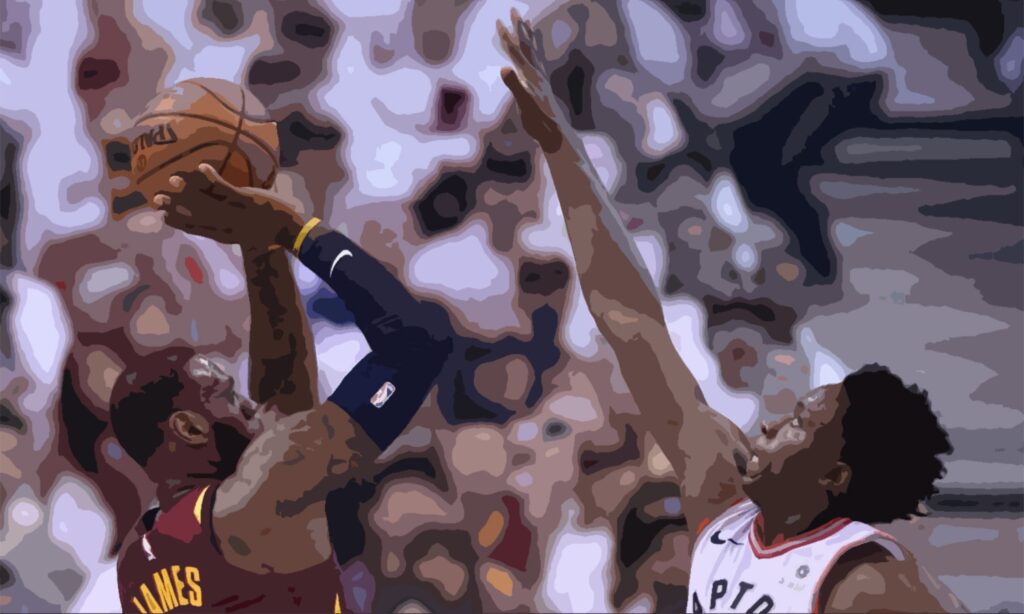Basketball is a popular sport played all around the world, known for its fast pace, high-scoring games, and thrilling displays of athleticism.
The sport has a rich history and a unique set of rules and regulations that set it apart from the other popular team sports.
From the jump ball to the buzzer beater, there are many aspects of basketball that make it an exciting and engaging sport to watch and play.
One of the most fundamental concepts in basketball is the field goal, which is a key component to the game.
Even if you are new to the sport, it is a term simple enough to remember.
That said, let’s break the terminology down.
What is a Field Goal in Basketball?
A field goal is a basket scored from anywhere on the court other than a free throw. This includes shots made from within or beyond the three-point line. Field goals can be attempted by any player on the court, and they can be scored in a variety of ways, such as by shooting, dunking, or by lay ups.
Keep in mind that field goals can either count for two or three points for every successful basket.
Should a player get fouled during a field goal attempt, they will be granted a certain number of free throw attempts.
On a successful field goal, players are always guaranteed one free throw attempt, regardless of if it was a two- or three-point attempt.
On a missed field goal attempt, the number of free throws correspond to the points the player would have received for a successful bucket.
In essence, three shots for a missed three-point attempt and two shots for a missed two-point field goal attempt.
Why is it called a Field Goal?
The term "field goal" in basketball originated in the early days of the sport, when the game was played outdoors on fields rather than indoors on a court.
During this time, a "goal" referred to any basket or receptacle that was used to catch the ball and score points.
The term "field" distinguished these goals from the other type of goal in basketball, which is the free-throw line, where players shoot uncontested shots from a fixed distance.
The free-throw line is not considered a "field goal" because the ball is not being thrown into a basket or receptacle that is guarded by defenders.
Over time, as basketball moved indoors and the game evolved, the term "field goal" continued to be used to describe any shot made during live play, other than free throws.
Today, the term is still widely used in basketball to refer to a basket made from the field of play, and it is one of the most important statistics tracked in the sport.
What is Field Goal Percentage in Basketball?
Field goal percentage in basketball is a statistic that measures a player's accuracy at shooting the ball into the basket.
It is calculated by dividing the number of made field goals by the total number of attempted field goals, and then multiplying by 100 to get a percentage.
The field goal percentage is a common measure of a player's efficiency and effectiveness on the offensive end of the court.
All-Time NBA Leader for Field Goals
Kareem Abdul-Jabbar leads all NBA players with 15,837 field goals made over the course of his 20-year career.
Abdul-Jabbar is widely regarded as one of the greatest basketball players of all time, and he played for the Milwaukee Bucks and the Los Angeles Lakers during his career.
He retired from the NBA in 1989, but his record for the most field goals made still stands to this day.
What is truly shocking is that Kareem Abdul-Jabbar made just a single three-point field goal ever.
Note that Abdul-Jabbar played from 1969 to 1989, and the three-point line was introduced to the NBA in the 1979-1980 season, when he was already a veteran player.
Three-point shooting was not a big part of his game, as he primarily relied on his signature "skyhook" shot, which he could make consistently from mid-range and closer to the basket.
As a result, he did not attempt many three-point shots during his career and did not pad his stats any further.
Not too far behind is Lebron James with 14,075 field goals made.
While James may not surpass Abdul-Jabbar in overall field goals, he is the undisputed leader in NBA points.
James used his scoring ability beyond the arc to contribute to the lead. It took him 20 seasons to take over as number one.
The remainder of the top 10 field goal leaders should come as no surprise either.
NBA Top 10 Career Leaders for Field Goals
| Player Name | Field Goals Made | |
|---|---|---|
| 1 | Kareem Abdul-Jabbar | 15,837 |
| 2 | Lebron James | 14,075 |
| 3 | Karl Malone | 13,528 |
| 4 | Wilt Chamberlain | 12,681 |
| 5 | Michael Jordan | 12,192 |
| 6 | Julius Erving | 11,818 |
| 7 | Kobe Bryant | 11,719 |
| 8 | Shaquille O'Neal | 11,330 |
| 9 | Dirk Nowitzki | 11,169 |
| 10 | Elvan Hayes | 10,976 |
Most Field Goals in a Game
The record for the most field goals made in a single NBA game is held by Wilt Chamberlain, who made 36 field goals in a game played on March 2, 1962, between the Philadelphia Warriors and the New York Knicks.
This remarkable performance by Chamberlain is widely considered to be one of the greatest individual achievements in NBA history.
In addition to his 36 field goals, he also scored 28 free throws for a total of 100 points in the game, another record that still stands today.
Final Thoughts
Field goals come in all sorts of unpredictable ways. The more skilled the NBA player, the more incredible the field goals will be.
There’s no denying that a dunk is one of the most entertaining field goals of all.
When a player adds an extra move leading up to the dunk, it makes it even more special.
I’m talking here about 360’s, between the legs, Tomahawk – you name it.
But some of the most entertaining field goals from my childhood were none other than Michael Jordan’s “fadeaway”.
It is one of the most iconic moves in basketball history, and it is a key part of what made him one of the greatest players of all time.
The “fadeaway” is a difficult move that involves jumping and shooting the ball while simultaneously moving away from the defender.
Jordan's version was particularly impressive because he was able to make it consistently, even under heavy defensive pressure.
He would typically start his move by dribbling towards the basket, before jumping up and backwards while simultaneously releasing the ball.
This created a difficult-to-defend angle for the defender, as Jordan was able to shoot the ball over the defender's outstretched arms while moving away from them.
We can go on about different field goal strategies, but I don’t want to spoil the surprise.
As you start watching basketball games more regularly, you’ll quickly learn every player’s go-to scoring move.






